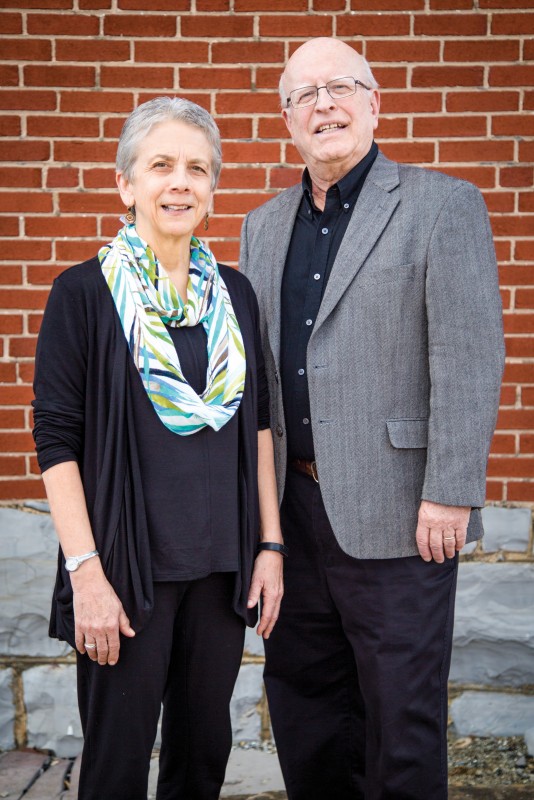
When Jarem Sawatsky wanted to bring trauma coursework to the Canadian School of Peacebuilding (CSOP), he turned to two experts he knew well: Vernon Jantzi, who had taught Sawatsky when he was a CJP student a dozen years earlier, and fellow CJP alumnus Elaine Zook Barge.
As CJP’s lead instructors for Strategies for Trauma Awareness and Resilience (STAR), Zook Barge and Jantzi are in high demand around the world, but they said they couldn’t refuse a request from Sawatsky, who co-founded CSOP in 2009. They accepted it even before they learned that the 2014 session of the school would be Sawatsky’s last as co-director, due to his declining health. (CJP restorative justice expert Howard Zehr also agreed to teach at CSOP 2014).
From the first minutes of the opening ceremony of CSOP, Zook Barge and Jantzi felt on familiar ground. Similar to SPI, CSOP began with a group ritual and introductions. But the ritual was one they hadn’t seen at SPI, and they loved it.
“We all put some grass seeds into soil within a former oil barrel,” said Jantzi. “We were told that we were helping to transform this soil into something productive and nurturing.”
At the closing ceremony that wrapped up the week, everyone could see shoots of grass poking through the soil. “It felt like the opening and closing rituals were bookends,” Jantzi said. “It was a moving experience.”
STAR was popular at CSOP, capped at 24 participants in the class. The two dozen enrollees were predominately female, and their age range was wide, 19 to 85 years. Undergraduates comprised more than half of those enrolled, which is unusual compared to other STAR trainings.
The undergrads were taking the course for college credit, requiring them to produce two papers. “We spent a whole lot of time grading papers,” Zook Barge said with a shake of her head, as if “never again.” She quickly added, though: “A lot of really good personal stuff came out of the papers that wasn’t shared in class.”
The young adults didn’t have the life experiences that STAR participants usually bring to the trainings, making it difficult for them to connect what they were learning with happenings in broader society, said Jantzi. “But it was good to see the way they became reflective about their life experiences to date.”
Jantzi, whose memories of SPI date to its founding years, said the lean staffing at CSOP reminded him of SPI two decades ago, when a tiny group of dedicated people were stretched to their maximum. “As far as I could see, [co-director] Valerie Smith and two student interns handled almost everything themselves – registration, food, snacks, taking photographs.”
About 200 people attended CSOP at some point during its two five-day sessions. The structure of the day was similar to SPI, with coffee breaks that gathered people from all the classes, except that CSOP didn’t restrict these to morning breaks. They had a group break in the afternoon too.
One other difference: CSOP holds classes for five straight days; almost all of SPI’s classes last for seven days, broken by a weekend.
“We copied the opening ceremonies, coffee breaks and group photographs from EMU,” Sawatsky told his EMU friends with a smile. His friends smiled back: that meant SPI was doing its job well, if its tried-and-true model fit other places and peoples too.